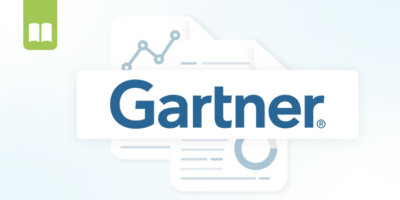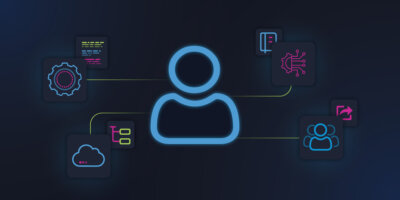How a Multinational Biotech Company Achieved Global Self-Service Networking with Itential
INDUSTRY
Biotechnology & Pharmaceutical
GOALS
- Maximizing Operational Uptime
- Eliminating Human Error
USE CASES
- Automating Enterprise Switching Infrastructure
- Self-Serve Networking Strategy
INTEGRATIONS

Key Results
![]()
Automated all enterprise switching infrastructure and SD-WAN rollout.
![]()
Standard network changes are exposed to end users for self-service, including those without network expertise.
![]()
Automated device rollout and migration of sites to SD-WAN, enabling 100% reliability in deployment.
![]()
Reduced incidents for network changes automated with Itential — estimated at 60% of total network changes and rising.
![]()
Reliable inventory for automated network changes with integrations to key platforms.
Reducing Downtime & Human Error for Critical Processes Across a Global Network
At this global pharmaceuticals and biotechnology company, network infrastructure is essential to daily operations. They rely on applications for medical research and pharmaceuticals production, managing global logistics and ensuring plants are running smoothly. That means deployments across complex, global infrastructure, in a business where any operational downtime is a huge risk and errors can have disastrous consequences.
As a result, their relatively small network team had been early adopters of network automation through open source tooling. The team was comfortable with building automations in high-code environments, and they built automations for several use cases right away. However, they identified a few key challenges early on that they knew would eventually become major hurdles:
- Automation complexity: Despite having the skills needed, some of the activities the team targeted for automation left them writing large, unwieldy scripts — especially when they tried to orchestrate multiple changes with scripts vs. automating specific, single-domain tasks.
- Manual script management: As the number of automations in their library went up, manual work to maintain them, execute them across different environments, and troubleshoot issues would increase.
- Service delivery time: The total time between service request and service fulfillment was not significantly impacted by early automation efforts due to compliance checks, validation, change management, and other manual activities.
- Low utilization: The team had no easy way to expose automations for consumption, so network services were still delivered in the same ticket-driven manner that they had been previously.
Combined with these existing challenges, the network team had to meet leadership goals around two major priorities: maximizing operational uptime and eliminating human error in order to improve stability and avoid high-risk incidents.
The team and IT leadership landed on a new strategy with a new vision: self-serve delivery for all network services, globally. This would increase the impact of automation with more use, faster delivery, and a more seamless user experience. However, this target model would require entire processes to be automated from request to fulfillment across multiple network domains and external systems.
As a result, they decided to adopt Itential in order to support and extend the impact of their existing and future high-code automation work. It wasn’t about replacing their expertise with Python and Ansible — it was about complementing it and enabling network services to be delivered through an internal developer platform to maximize efficiency and impact.

By implementing standardization and delivering network services, we’ve really reduced the risk of downtime. We can say with a good degree of certainty that network faults we encounter are coming from changes we haven’t automated yet with Itential.
Network Architect
Why They Chose Itential to Facilitate Self-Serve Networking
The network team identified Itential as the only commercial solution which could support their self-serve networking goals and provide a centralized way to orchestrate network services, while also enabling them to continue building high-code automations and maximizing their impact.
Itential’s unique integration model was one of the most important factors in their decision. Key here was SolarWinds, used for compliance management — Itential is able to take in all SolarWinds payloads and use JSON to transform them into the required data formats for any subsequent operations. This meant compliance checks could be built directly into orchestrated workflows.
With Itential, they were able to realize their self-serve networking goals through our:
- Single platform for building, operating, maintaining, and exposing workflows across all network infrastructure — data centers, SD-WAN, cloud, etc.
- Ability to onboard CLI-based automations (Python, Ansible) and attach APIs to them.
- API-driven integration model for integrating with every third-party system and application required for delivering automated network services — eliminating the custom effort required to integrate scripts with these systems.
- Easy low-code workflow builder for orchestrating workflows with onboarded scripts, integrated systems, and data transformations in order to orchestrate an entire network service end-to-end.
- Ability for engineers to ‘decorate’ scripts with JSON schemas that include input validation in order to present high-code automations to users without coding expertise.
- Ability to leverage existing SSO solution.
- RBAC features and the ability to integrate with all access control, authorization, and security solutions already in place.
- The ability to expose network changes as services to non-networking users greatly increases utilization and reduces the load on the network team.
They were able to start delivering network services as standardized products through an internal platform, easily called via API.

Self-service was always the goal. What we didn’t realize was how quickly we would be able to deliver.
Manager, Network Automation
What They’ve Achieved Using Itential to Deliver Self-Serve Networking
The company adopted Itential primarily to tackle two goals: maximizing uptime and eliminating error.
They have already been able to automate their entire enterprise switching infrastructure: endpoint management, software upgrades, configuration management, asset port management, VLANs, and more. More recently, they have extended their automation reach to their SD-WAN rollout, which is automated per site using workflows built by the team.
The result? All of their standard changes and upgrades are now error-free, and the device rollout and migration of sites to SD-WAN has seen 100% reliability in deployment. They’re able to deliver changes more consistently, without errors, significantly reducing the number of incidents for a large percentage of network changes.
Because of that consistency, they’re able to deliver those changes to others in the organization to self-serve with complete confidence, including those without networking expertise. Workflows are consumed as network products, and they can be delivered almost instantly via end-to-end orchestration.
Going forward, their goal is to offer all standard network services via the self-serve platform, turning the network into a driver for efficiency across the organization — with Itential as the underlying platform facilitating it.


